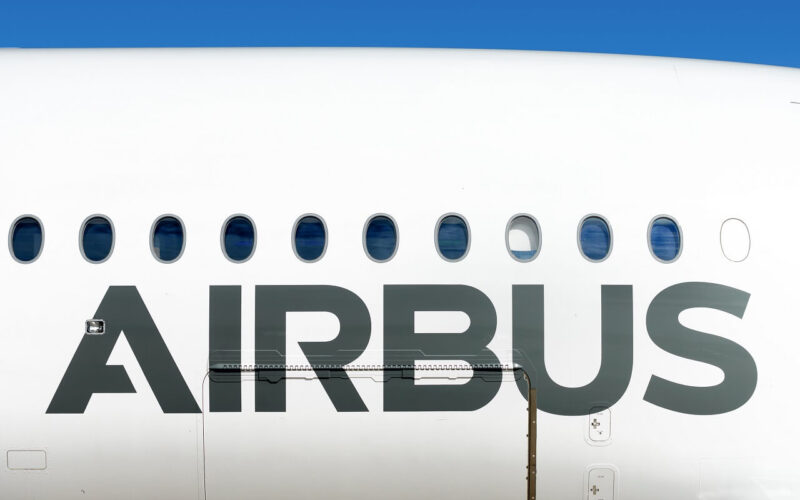According to recent media reports, Airbus is halting a long-held policy of publishing the catalog prices for its product line. The European manufacturer has been providing list prices for its aircraft on an annual basis, but so far has not released 2019 data. The company stresses that the list-price data do not reflect actual values of finalized deals. So what is the use of list prices and in what way can they be deemed as irrelevant?
Asked about aircraft list prices at the recent Paris Air Show, where Airbus topped the deal scoreboard, Christian Scherer, Airbus’ new Chief Commercial Officer, said: “Catalogue prices are relatively meaningless… You have seen us go relatively silent on catalogue prices,” he told FlightGlobal. Indeed, while rival U.S. plane maker Boeing has already published its 2019 list prices, Airbus’ last update was in 2018.
Publishing the catalog prices annually has been a common practice for both manufacturers. In the last year’s release, along with the data on the pricing range for each of Airbus airplane types by variant, the European plane maker also announced it had increased average list prices of its commercial aircraft by 2% across the product line, effective January 1, 2018.
This is important information when analyzing and comparing how production and other variables impact the prices. John Leahy, Chief Operating Officer Customers, Airbus Commercial Aircraft, stated in the press release: “Our new 2018 pricing reflects Airbus’ continuous investments into its aircraft programs to maximize their value for our customers’ satisfaction – with the winning combination of performance, operating economics and passenger experience”.
Catalogue prices can be useful as a starting point for negotiations with potential buyers, as they provide a benchmark value, from which discounts can be agreed upon, and deposits and pre-delivery fees calculated. The data also allows comparisons to be made between Airbus and Boeing products in the same market segment.
However, the impact of discounts as well as other varying factors on the final value of a contract is the very reason why Scherer regards catalog prices as irrelevant. At a closer look, it becomes clear that values of finalized aircraft deals do not exactly correspond with the official pricing list published by the manufacturer.
Base value vs final order value
There are several reasons behind the discrepancies. First and foremost, as Airbus itself states, these depend on design weight, engine choice and level of selected customization.
Non-price factors, such as fuel burn rates and efficiency, the weight of an aircraft and its maintenance costs, as well as range, potential routes, passenger comfort, field performance and noise levels, are also monetized and then reflected in the final value of a contract.
Other, more complex factors that strongly impact negotiations over prices are, of course, market variables and order size, but also – different types and ranges of discounts, depending on the size and status of the airline as well as its past relationship with the manufacturer.
These aspects were outlined in the U.S. International Trade Commission’s (USITC) investigation into imports of 100-150 seat large civil aircraft from Canada, also known as the Boeing and Bombardier CSeries dispute.
For instance, the USTIC’s inquiry found a pattern of pricing for new aircraft entering into service, characterizing two key types of customers: “launch” and “marquee” sales. Airlines that choose relatively new aircraft types with unproven track record usually receive a discount that is around 20% to 30% lower than the price of subsequent sales, when risks associated with purchasing the aircraft decline. The customer types are distinguished by their status, with “marquee” discounts being offered to more prominent airlines, presumably at even higher price reduction percentage.
History between the airline and the plane maker also plays a key role. In the case of USTIC’s investigation, the outcome of prior sales in that particular market did not affect importer‘s and customer‘s purchase price expectations, but that was because there were no other prior sales prices. If they knew this data, purchasers said they would expect comparable discounts.
According to Boeing, which is also mentioned in the inquiry, aircraft pricing set at the time of order not only affects the specific sales transaction, but also future transactions. The argument is that price feedback from customers creates a cycle in which purchasers expect comparably low prices for future sales. Boeing calls this the “lighthouse effect”.
Another aspect that can affect discounts is when an airline considers purchasing two different types in the same order, or simultaneously negotiates for both narrow- and wide-body aircraft. Besides, some orders include or solely focus on aircraft conversions. In other words, the numerous options and monetary variables makes it hard to compare the given price data across contracts on a consistent basis, USTIC’s respondents conclude.
As for Airbus, the decision to scrap catalog prices may allow more negotiating power and flexibility compared to the constraints of price points it itself had previously set. The consequences of that decision are yet to be seen. The question for now is, will other manufacturers follow Airbus’ lead?

